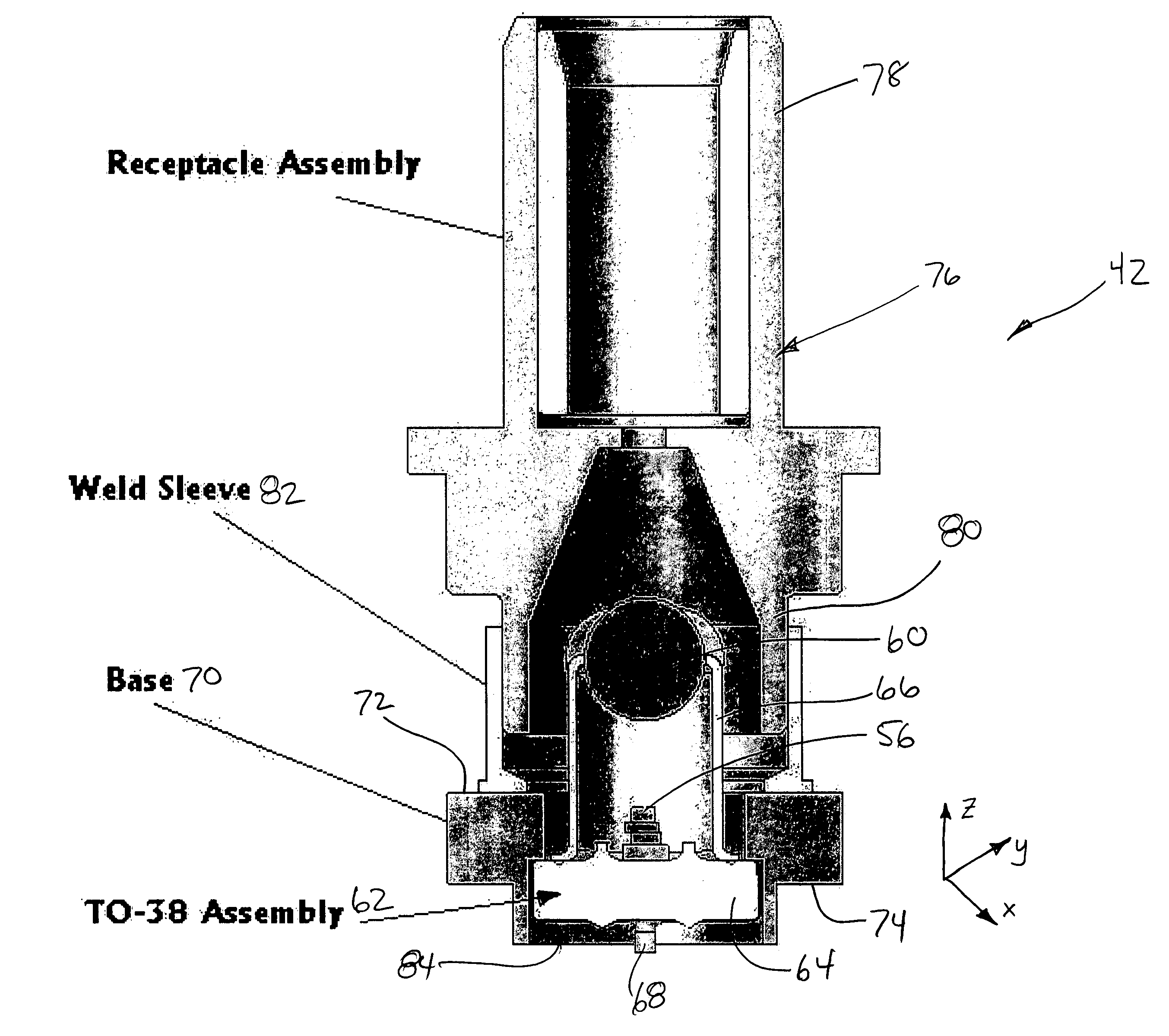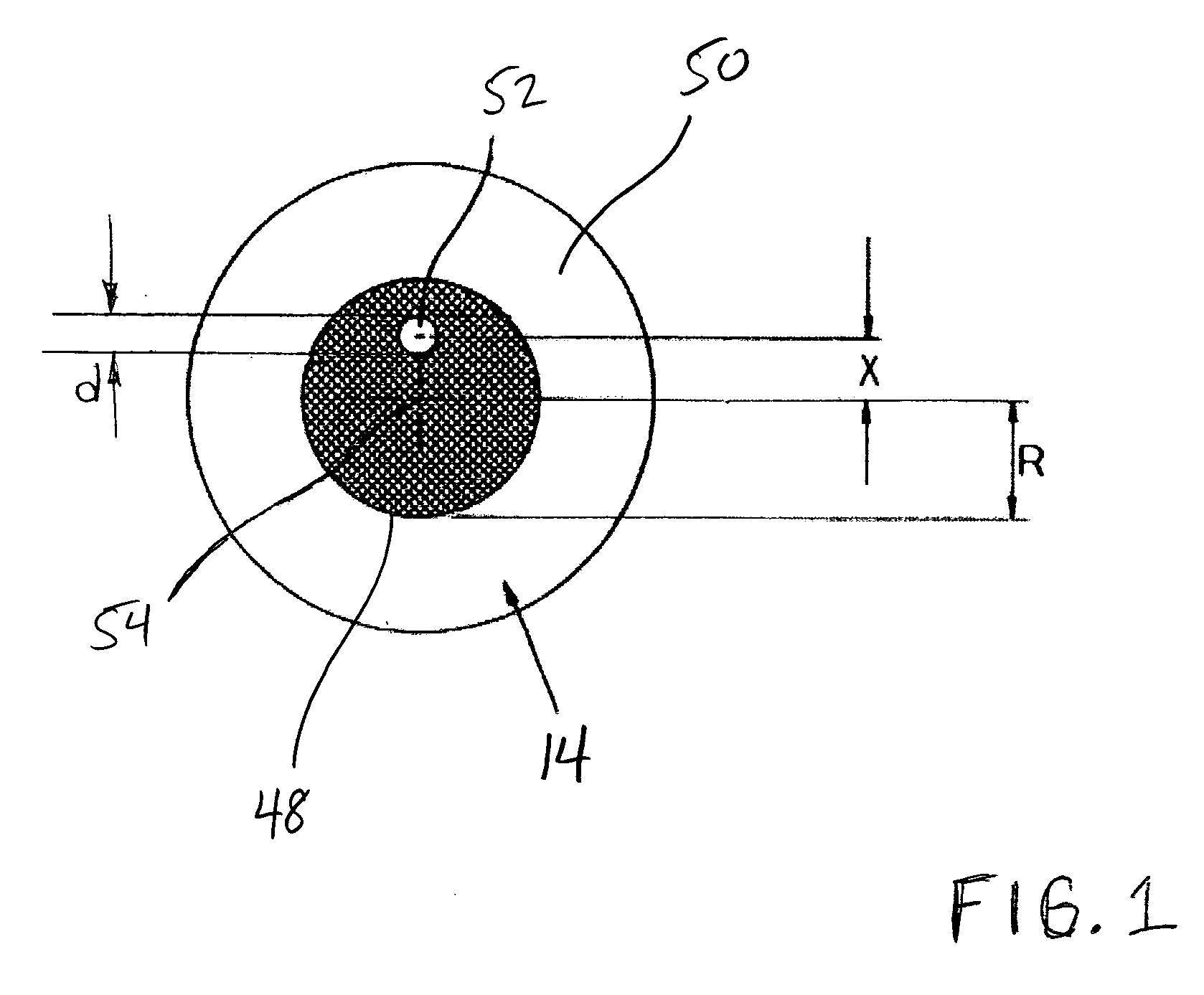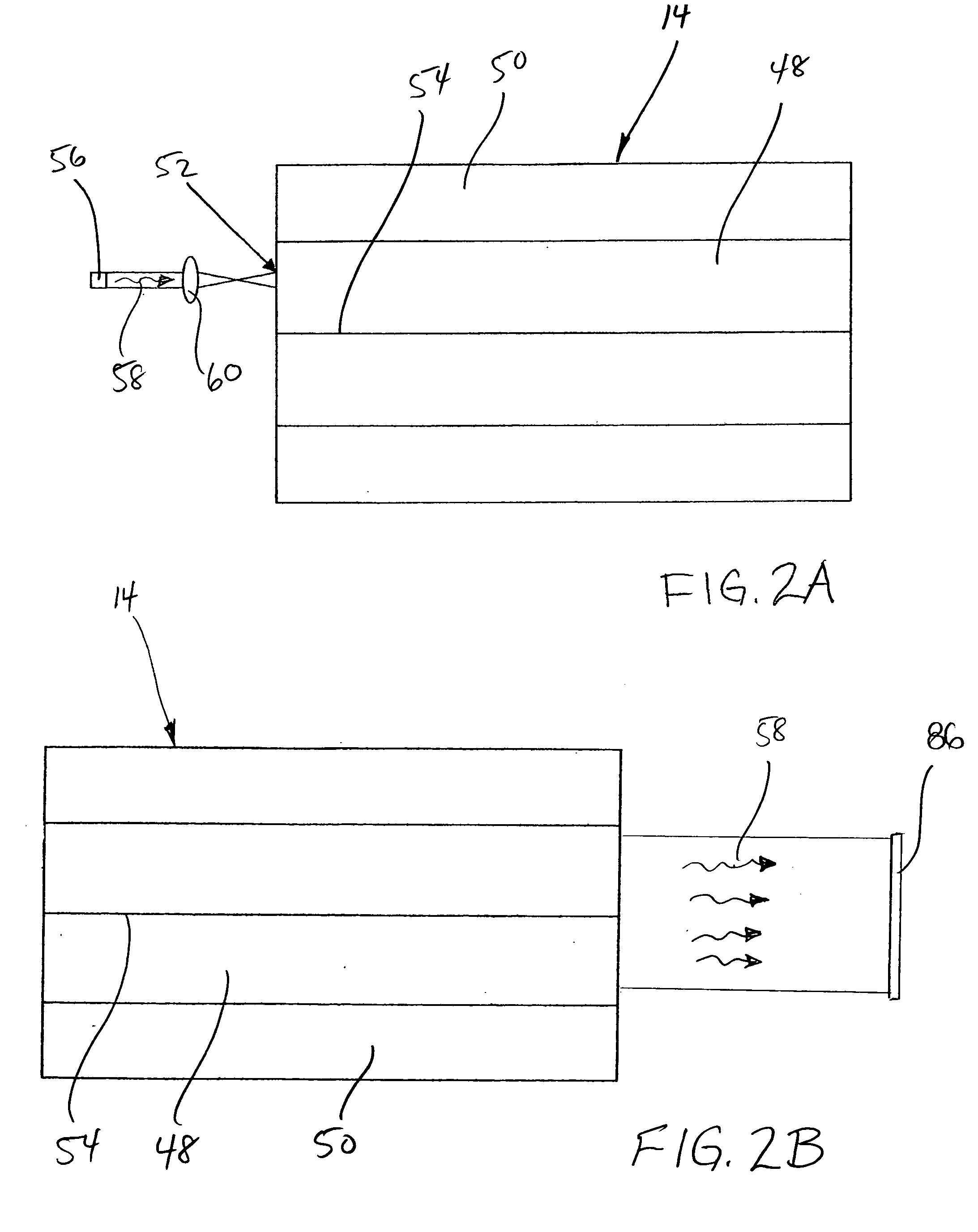Multimode fiber optical fiber transmission system with offset launch single mode long wavelength vertical cavity surface emitting laser transmitter
- Summary
- Abstract
- Description
- Claims
- Application Information
AI Technical Summary
Benefits of technology
Problems solved by technology
Method used
Image
Examples
first embodiment
[0038] Turning to FIGS. 2A and 2B, a schematic diagram of the offset launch configuration is illustrated wherein the VCSEL transmission signal 58 is offset launched into the core 50 of the multimode fiber 14 with the help of a lens 60 to focus the laser output. The lens 60 operates to focus and size the launch beam 52 at the offset launch point on the end face of the fiber 14. In this embodiment, both the VCSEL 56 and the lens 60 are positioned offset from the fiber axis 54.
[0039] The ideal offset launch has been found experimentally to be 20 um on 62.5 um MMF and this has been reliably achieved by translating the VCSEL device 56 laterally from the center axis 54 of the multimode fiber 14 by a fixed amount and then fixing the VCSEL 56 in place. This is an easy process in manufacture and negates the need for a mode conditioning patchcord.
[0040] Turning to FIG. 3, the VCSEL 54 and lens 60 are assembled into a TO-38 package generally indicated at 62. The TO-38 package 62 including a h...
second embodiment
[0045] In a second embodiment as shown in FIG. 8, the VCSEL 56 is mounted normal to the end surface of the fiber 14, and the transmission beam 58 is launched directly into the core 48 at an offset of approximately 20 μm from the optical axis 54 of the core 48. In this particular embodiment, the transmission signal 58 is launched directly into the core 48 of the multimode fiber 14 without an intermediate collecting element, i.e. lens 60. More specifically, the TO-38 package 62 is provided with a window (not shown) rather than the lens at the top of the can enclosure 66, and the TO-38 package 62 is mounted immediately adjacent to the end surface of the multimode fiber 14, i.e. eliminating the extra distance required for the focal length of the lens 60. This arrangement is advantageous for simplifying manufacture of the TO-38 package 62 as there is no need to optically align a lens 60 with the VCSEL 56. Furthermore, the length of the entire transmitter optical subassembly 42 would be s...
PUM
 Login to View More
Login to View More Abstract
Description
Claims
Application Information
 Login to View More
Login to View More - R&D Engineer
- R&D Manager
- IP Professional
- Industry Leading Data Capabilities
- Powerful AI technology
- Patent DNA Extraction
Browse by: Latest US Patents, China's latest patents, Technical Efficacy Thesaurus, Application Domain, Technology Topic, Popular Technical Reports.
© 2024 PatSnap. All rights reserved.Legal|Privacy policy|Modern Slavery Act Transparency Statement|Sitemap|About US| Contact US: help@patsnap.com










